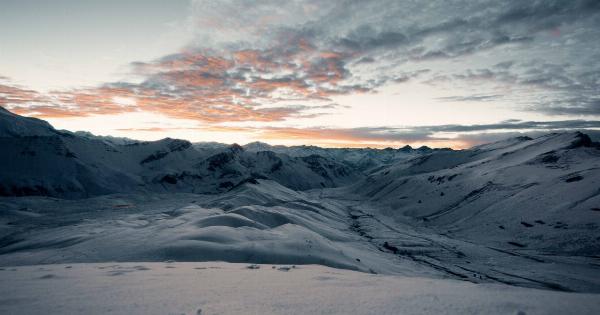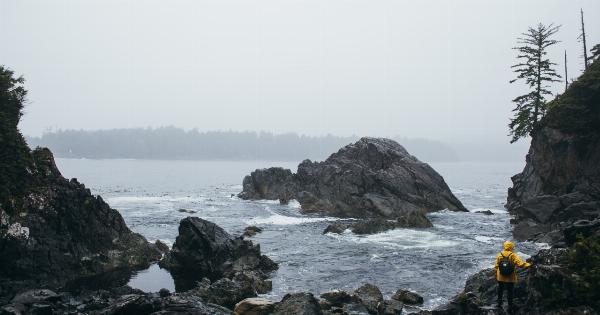Winter can be harsh, and cold is a constant companion during this season. The biting wind that seemingly pierces through every layer of clothing can cause discomfort and even illness.
Despite the discomfort that comes with the cold, it has intrigued many scientists and researchers through history, and efforts to understand it have unearthed several fascinating truths.
The Science Behind Cold
Cold is not just an absence of heat; it is an entity of its own. It is the presence of negative thermal energy, which implies that the molecules in the air or water move with less energy than normal.
The temperature of an object reflects the energy level of its molecules, and the temperature we feel is a result of our bodies exchanging heat with the environment.
The flow of heat from a high-temperature region to a low-temperature one is called conduction. For example, metal conducts heat well, which is why a metal spoon left in a hot drink quickly becomes hot.
In contrast, air is a poor conductor of heat, which means that it is an excellent insulator. This property of air is why we wear warm clothes in winter; it traps the heat our bodies produce and preserves it against the cold outside.
Another way we lose heat during winter is through radiation. Our bodies emit infrared radiation, which can lose heat to cooler objects in the surrounding environment.
On a clear night, for example, the ground and objects on it can radiate away their heat, causing a drop in temperature.
The Cold and the Human Body
Cold temperatures can have significant effects on the human body, both positive and negative. Being exposed to cold temperatures for a long period can reduce the core body temperature, leading to hypothermia.
Mild hypothermia is associated with shivering, increased heart rate, and breathing difficulties, while severe hypothermia can cause confusion, drowsiness, and even coma and death.
However, there are also positive effects of cold on the body. Exposing the body to cold temperatures, either through a cold shower or cryotherapy, is believed to have several health benefits.
Studies have shown that cold exposure can help reduce inflammation, improve mental health and pain management, and boost the immune system.
The Coldest Places on Earth
Despite the harshness of cold, some places on earth experience it more than others. Here are some of the coldest places on earth:.
Oymyakon, Russia
Oymyakon, a village in the Yakutia region of Russia, holds the record for the coldest inhabited place on earth, with temperatures reaching as low as -96.16°F (-71.2°C) in 1926.
At these temperatures, the air is so dry that items such as sugared tea become rock solid if dropped. People who live in Oymyakon have adapted to the harsh cold by wearing animal furs and by building their houses with tree trunks buried in the ground.
Vostok Station, Antarctica
Vostok Station, located in the middle of Antarctica, set the record for the coldest temperature ever recorded on earth at -128.6°F (-89.2°C) in 1983.
The station is located in a region where the air is thin and dry, reducing the effect of the greenhouse effect, which would otherwise warm the earth.
Siberia, Russia
Siberia, known for its extreme cold, is one of the coldest places on earth. The region experiences temperatures of below -50°C (-58°F) and has recorded the lowest temperature ever recorded in the northern hemisphere, at -67.7°C (-89.9°F).
Denali, Alaska
Denali, located in the Alaskan range, is the highest peak in North America, with temperatures often plunging to -40°F (-40°C) during the winter months.
Despite the cold weather, Denali is home to several animals, including brown bears, caribou, and wolves.
Cold in Art and Culture
Cold has inspired artists and writers for centuries, and it features prominently in many works of art and literature. The cold is often depicted as an imposing and capricious force, a metaphor for hardship and adversity.
In literature, many books, such as Jack London’s “To Build a Fire” and Fyodor Dostoevsky’s “The House of the Dead,” feature cold as a central theme.
The cold is often a character in these works, shaping the lives and actions of the characters in the story.
Cold also plays a significant role in art. Many painters, such as Pieter Bruegel the Elder, have depicted winter in their paintings, capturing the stark beauty of the season.
Additionally, many songs mention the cold, with musicians such as Johnny Cash and Tom Waits singing about the chill of winter.
The Future of Cold
Despite our understanding of cold, much is yet to be discovered.
Research into superconductivity, a phenomenon where a material can conduct electricity with zero resistance at extremely low temperatures, could revolutionize energy generation and storage. Furthermore, scientists are studying the ways in which animals and plants adapt to cold environments, offering potential insights into coping with the effects of climate change.
Despite the discomfort of cold, the scientific study of it has unearthed many fascinating facts about the natural world.
From the coldest places on earth to the effects of cold on the human body, the study of cold continues to contribute to our understanding of the world around us.
























